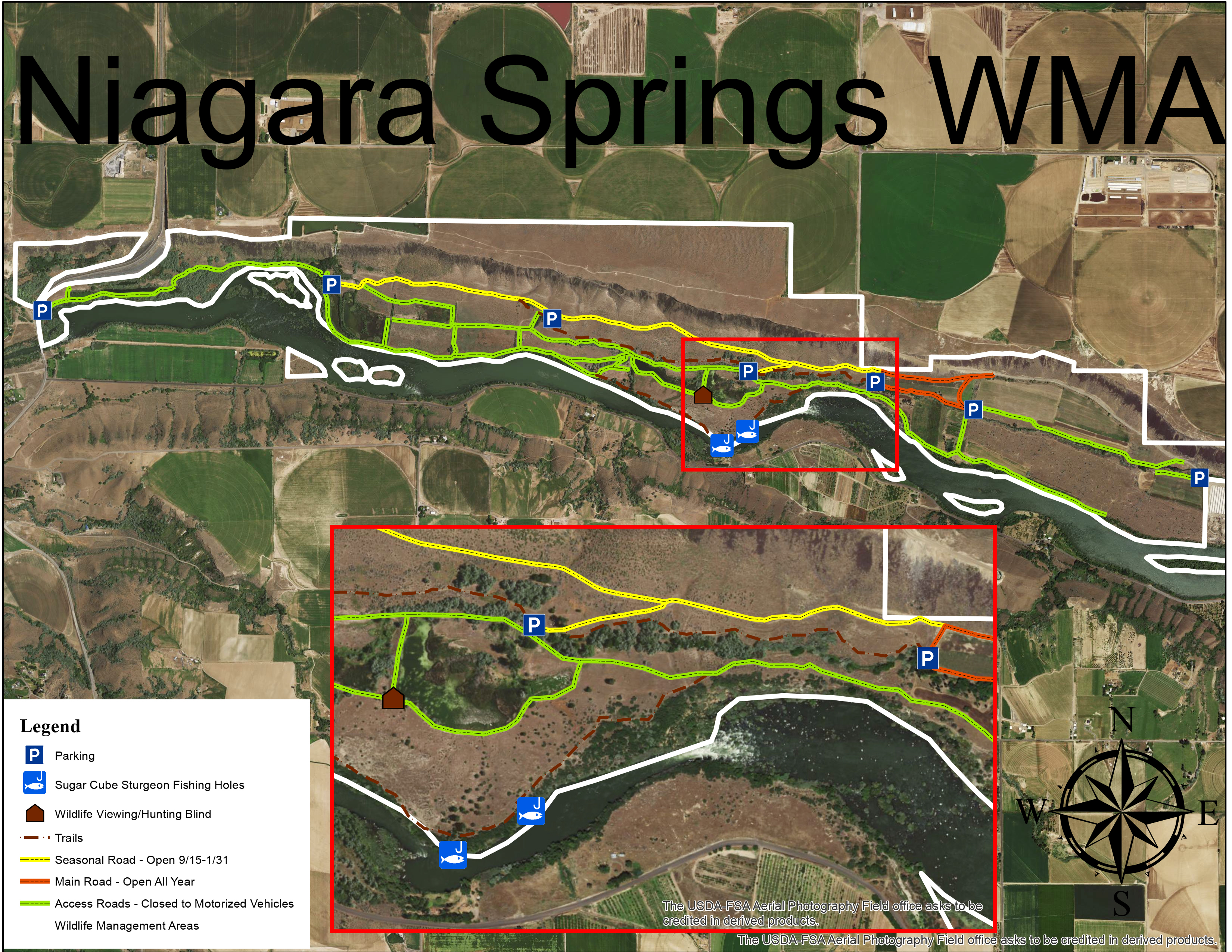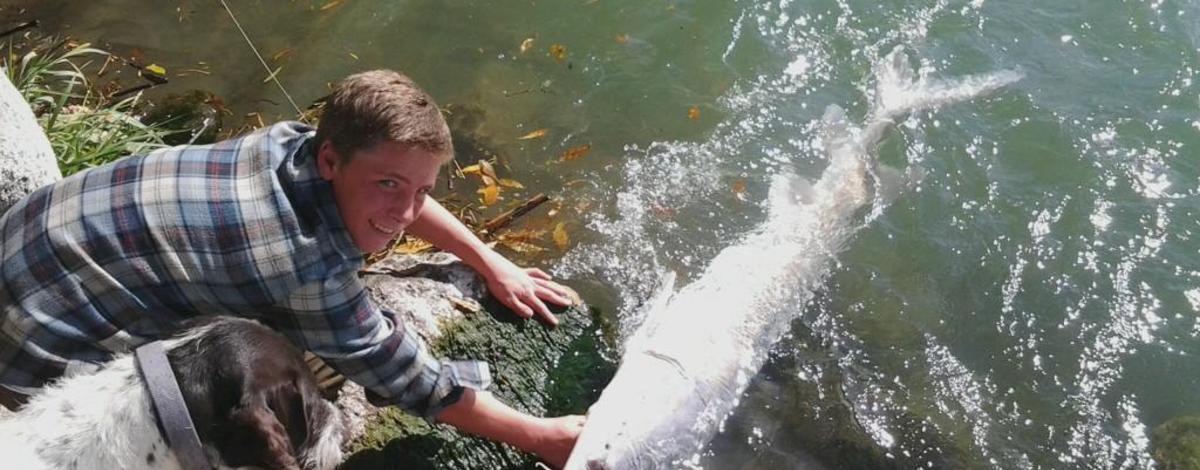The Snake River supports a healthy population of white sturgeon in southern Idaho, providing anglers the opportunity to pursue the largest fish in Idaho. A prized fish for anglers to catch, anglers often are challenged to find public access sites. Recent efforts by Fish and Game will help to provide additional public access sites when fishing for sturgeon on the Snake River.
In response to requests from local sturgeon anglers, in the fall of 2019 staff from the Magic Valley Region cleared two new sturgeon fishing access points within the Niagara Springs Wildlife Management Area (WMA) south of Wendell, now named the Sugar Cube sturgeon fishing holes. These same sturgeon anglers were key in helping to identify known sites where sturgeon can be found in the stretch of the river that includes the WMA. Once identified, department staff cleared brush to make the sites accessible.

A new sturgeon fishing access site has been developed within the Niagara Springs Wildlife Management Area.
According to Sean Schroff, manager of the Niagara Springs WMA, “we’re excited to be able to provide additional public access to anglers to pursue these large fish. Adding the Sugar Cube sturgeon fishing holes compliments our goal here at the WMA to provide multiple access opportunities for anglers.”
The Niagara Springs WMA can be found by driving south from Wendell, approximately 5 miles on Highway 46 Turn east onto Bob Barton Rd. and immediately to turn south onto S 1950 E for 2 miles. At the bottom of the Niagara Spring Road grade, the WMA parking area is on the Southside of the road. The two sturgeon fishing sites can be found by walking about a quarter-mile along the trail leading from the public parking area.

Map of the Niagara Springs WMA showing the new Sugar Cube sturgeon fishing holes.
White sturgeon are the largest freshwater fish in North America. Historically, sturgeon up to 1,500 pounds were caught by anglers in Idaho. They are a long-lived fish, and can live to be over 100 years old. They reside in the Snake, lower Salmon, and Kootenai Rivers of Idaho. They are typically found in large rivers and are uniquely adapted for life on the river-bottom. Torpedo-shaped bodies help them swim effortlessly in brisk river currents, and their small eyes are adapted for the dark, deep pools where they live. Sensitive whiskers help them identify food items in the dark water, and their suction-tube mouths easily vacuum up whatever food they come across.
For more information, call the Magic Valley Regional Office at (208) 324-4359 or visit the Niagara Springs WMA webpage at https://idfg.idaho.gov/wma/niagara-springs.

